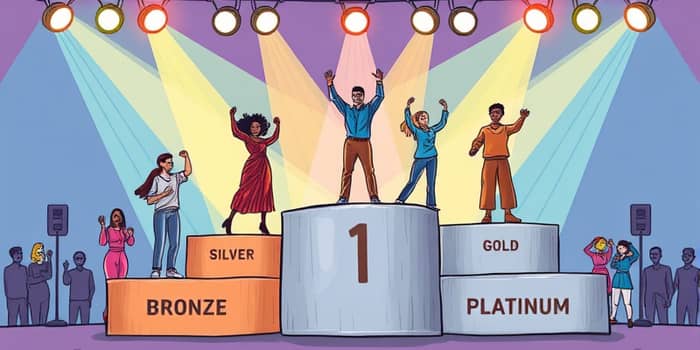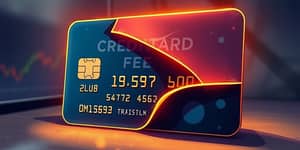
Tiered rewards programs are designed to foster long-term customer loyalty and engagement by offering increasingly attractive perks. By structuring benefits into levels, businesses motivate members to pursue higher status. Each tier reflects a deeper relationship between the brand and the customer, encouraging repeat interactions and sustained activity. Over time, this approach can transform occasional buyers into brand advocates, ultimately driving revenue and stability. Understanding the mechanics behind these systems is the first step toward unlocking elite-level advantages that deliver significant value back to both companies and consumers alike.
A tiered loyalty program segments members based on activity, spending, or engagement metrics. Participants start at an entry level and progress through ranks such as Bronze, Silver, Gold, and Platinum. Advancement criteria vary by program but typically involve purchase thresholds, point accumulation, or specific actions like referrals. This structure creates a clear roadmap, ensuring that customers know exactly what is required to achieve the next level. It also taps into intrinsic motivations, as moving up tiers often brings a sense of achievement and recognition that transcends the reward itself.
At its core, this model delivers varying benefits depending on their tier status, with perks that grow in value and exclusivity. Initial levels might offer basic discounts or welcome bonuses, while top tiers unlock concierge services, personalized experiences, and unique rewards. By aligning incentives with customer behavior, brands can steer engagement in profitable directions, boost retention rates, and differentiate themselves in crowded markets.
Most programs implement between two and four tiers, though specialized industries like gaming may feature more. Standard labels include Bronze, Silver, Gold, Platinum, and sometimes Diamond. Custom naming conventions can reinforce brand identity and storytelling, adding an emotional layer to the customer journey. Progression criteria should be transparent and communicated clearly, eliminating confusion and building trust. Members can then track their status visually, often through dashboards or mobile apps, which fosters ongoing interaction and goal-oriented behavior.
Incorporating increase customer lifetime value through progression means each successive tier offers benefits that outweigh previous levels. Elements like personalized offers, surprise gifts, and select previews tap into the VIP experience, reinforcing a sense of exclusivity and privilege that many members find irresistible.
As members ascend through the ranks, the enhancement of perks drives deeper engagement. Beyond monetary savings, higher tier status often confers social recognition and public acknowledgment, which can be powerful motivators. Premium seating, priority boarding, and insider access are just a few examples of how brands reward their most devoted customers. This strategic layering of benefits fosters loyalty and turns routine transactions into memorable experiences that inspire advocacy.
Ultimately, this combination of tangible and intangible rewards cements relationships, creating communities of loyal members who actively champion the program and encourage others to join.
JetBlue’s Mosaic program exemplifies the power of tiered loyalty, offering four distinct tiers based on “tiles” earned or spending thresholds. From Mosaic 1 at 50 tiles or $5,000 spend, to Mosaic 4 requiring 250 tiles or $25,000 spend, each level builds upon the last. Members enjoy complimentary inflight drinks, free flight changes, and accelerated points earnings as they climb. At the highest tier, eligible flyers can even access helicopter transfers, showcasing the depth of premium benefits available.
The value equation highlights a compelling return: Mosaic 4’s benefits can exceed $8,365 annually, with an elite reward rate approaching 27%. This transparent advancement criteria and clear milestones framework ensures that members understand precisely what it takes to unlock each benefit, fueling motivation and sustained loyalty.
Tiered programs masterfully exploit human psychology by providing visible progress indicators, status symbols, and community recognition. Badges, tier icons, and leaderboard placements all contribute to a feeling of accomplishment and prestige. These elements harness the power of gamification, encouraging members to invest more time and resources to achieve the next milestone. The satisfaction of leveling up amplifies emotional connections to the brand, making loyalty programs far more than transactional.
By combining social proof with tangible rewards, companies create ecosystems where engaged customers not only spend more but also actively promote the program to peers.
To launch or refine a tiered rewards program, businesses must focus on clarity, fairness, and personalization. Set achievable entry thresholds and ensure incremental gains remain compelling. Communicate progress through real-time tracking tools and periodic reminders that keep members informed and motivated. Integrate tailored rewards based on behavior to reinforce desired actions, whether that’s increased spending, referrals, or social sharing.
Regularly analyze program data to fine-tune tier thresholds, reward types, and communication strategies. Solicit feedback from members to understand their preferences and pain points. This iterative approach ensures that the program stays relevant and continues to deliver value while maintaining profitability and operational efficiency.
Tiered rewards programs offer a proven pathway to elevate brand loyalty to new heights by blending structured progression with meaningful incentives. From entry-level benefits that entice new members to elite perks that delight veteran customers, every tier plays a pivotal role in the overall loyalty journey. By prioritizing transparency, leveraging psychological insights, and consistently evolving reward offerings, organizations can unlock higher customer lifetime value and foster a dedicated community of brand champions.
Embrace the tiered model and watch as your most engaged customers ascend to elite status, unlocking unparalleled experiences and solidifying lifelong loyalty.
References













